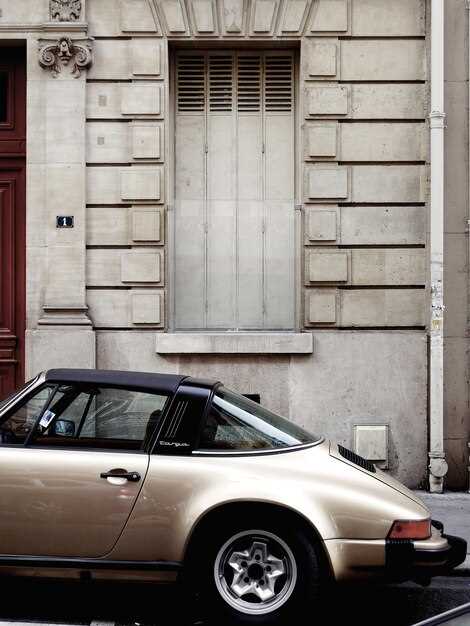
The Porsche 911 Targa has always held a unique position in the automotive world, representing a blend of open-top driving pleasure and the distinctive lines of the classic 911 design. First introduced in 1965, the Targa was developed as a response to safety regulations in the United States that restricted convertible models. The iconic roll bar and removable roof panel transformed the 911 into a versatile vehicle that could offer an exhilarating driving experience while maintaining structural integrity and safety.
Throughout its history, the 911 Targa has undergone various evolutions, each marked by significant engineering advancements and style changes. Among the notable rare models are the early generations that featured the innovative Targa top system, which was a revolutionary concept at the time. Each iteration showcased not only the performance capabilities Porsche is renowned for but also the company’s commitment to embracing design challenges without compromising functionality.
This article delves into the origins and development of rare Porsche 911 Targa models, exploring their unique characteristics and the automotive legacy they have established. From the original models that defined the Targa concept to the limited editions that now fetch high prices among collectors, the story of the 911 Targa is one of innovation, style, and enduring appeal in the world of luxury sports cars.
Identifying the Most Sought-After 911 Targa Variants
The Porsche 911 Targa has become an icon in the automotive world, showcasing a distinctive blend of performance and style. Certain variants stand out as particularly desirable among collectors and enthusiasts. Identifying these sought-after models requires knowledge of both their historical significance and unique features.
One of the most coveted Targa variants is the 1973 Porsche 911 Targa. This model is notable for being the last of the classic body style before the introduction of federally mandated safety requirements. Its lightweight construction, combined with the classic design, makes it highly desirable.
The 1980s models, particularly the 911 Targa from 1984, also attract attention due to their technological advancements, including improved engine performance and modernized safety features. The transition from air-cooled engines to newer designs marked a significant evolution in the Targa line.
964 Targa, produced from 1989 to 1994, is another model that captures the interest of collectors, primarily due to its unique combination of classic lines and contemporary engineering. The all-wheel-drive system and updated features make it a practical choice for driving enthusiasts.
The introduction of the 997 Targa series in the early 2000s brought modern comforts and performance to the Targa lineage. This variant features a unique glass roof that can slide back, combining coupe and convertible experiences, thus appealing to a broader audience.
Finally, the 991 Targa, launched in 2014, exemplifies the culmination of Porsche’s design philosophy, merging traditional elements with state-of-the-art technology. Its unique roof mechanism and enhanced driving dynamics place it among the most sought-after modern Targa variants.
In summary, rare Porsche 911 Targa models have distinct characteristics that elevate them in the eyes of collectors and driving enthusiasts. Each variant represents a significant phase in Porsche’s evolution, ensuring their status as prized possessions in the automotive community.
Exploring the Design Innovations of the 911 Targa

The Porsche 911 Targa stands out not only for its performance but also for its unique design innovations. Introduced in 1965, the Targa variant was conceived as a response to safety regulations while maintaining the classic open-top experience. The distinctive feature is its robust roll hoop, which adds structural integrity and enhances passenger safety during driving.
One of the most significant innovations of the 911 Targa is its removable roof panel. This feature allows for an exhilarating open-air experience while retaining the rigidity of a coupe. The mechanism for removing the roof panel is elegantly engineered, making it accessible and user-friendly. Drivers can transition from a closed cabin to an open environment seamlessly, adding versatility to the driving experience.
The incorporation of a large rear window further distinguishes the Targa, offering exceptional visibility and a sense of space within the cabin. This design choice also serves a practical purpose, enhancing the aerodynamics and reducing drag as the car moves at speed. Additionally, the rear window is complemented by a unique soft-top cover, which provides a refined aesthetic when the roof is stowed away.
Porsche’s commitment to craftsmanship is evident in the materials used in the 911 Targa. High-quality finishes, along with advanced technology, create a sophisticated interior that aligns with the brand’s luxury identity. The use of lightweight materials contributes to the vehicle’s agile performance, allowing for an engaging driving experience.
Overall, the design innovations of the 911 Targa reflect Porsche’s ethos of marrying functionality with elegance. Its unique characteristics not only set it apart from other models in the 911 lineup but also solidify its status as an icon in automotive design.
The Market Dynamics of Rare 911 Targa Models

The market for rare 911 Targa models reflects a unique combination of nostalgia, performance, and exclusivity. These classic vehicles, known for their distinctive design and open-top experience, attract collectors and enthusiasts alike. The scarcity of certain Targa variants further accentuates their value, creating a vibrant marketplace driven by supply and demand.
Factors influencing valuation include historical significance, provenance, and condition. Models such as the 911 Targa 2.7 and the 911 Turbo Targa have become particularly coveted due to their limited production runs and iconic status within the Porsche lineage. Buyers often seek vehicles with a well-documented history and original components, which can significantly elevate the selling price.
The enthusiast community plays a critical role in the dynamics of this market. Events such as classic car shows and auctions bring together buyers and sellers, fostering discussions about restorations and modifications. Social media and dedicated online platforms also facilitate information exchange, impacting market trends and values. Collectors are not just interested in the physical attributes of a rare 911 Targa; they are equally captivated by the stories and emotions tied to these vehicles.
Current market trends indicate a growing interest in early Targa models, as younger collectors are increasingly attracted to the blend of classic aesthetics and modern performance. Additionally, environmental concerns and the shift towards electric vehicles are prompting a reassessment of classic cars as investment assets, adding another layer to their desirability.
In conclusion, the market dynamics surrounding rare 911 Targa models are shaped by a multitude of factors, including historical significance, community engagement, and shifting consumer preferences. As these vehicles continue to capture the imagination of car enthusiasts globally, their market value is likely to remain strong for years to come.
 Skip to content
Skip to content





